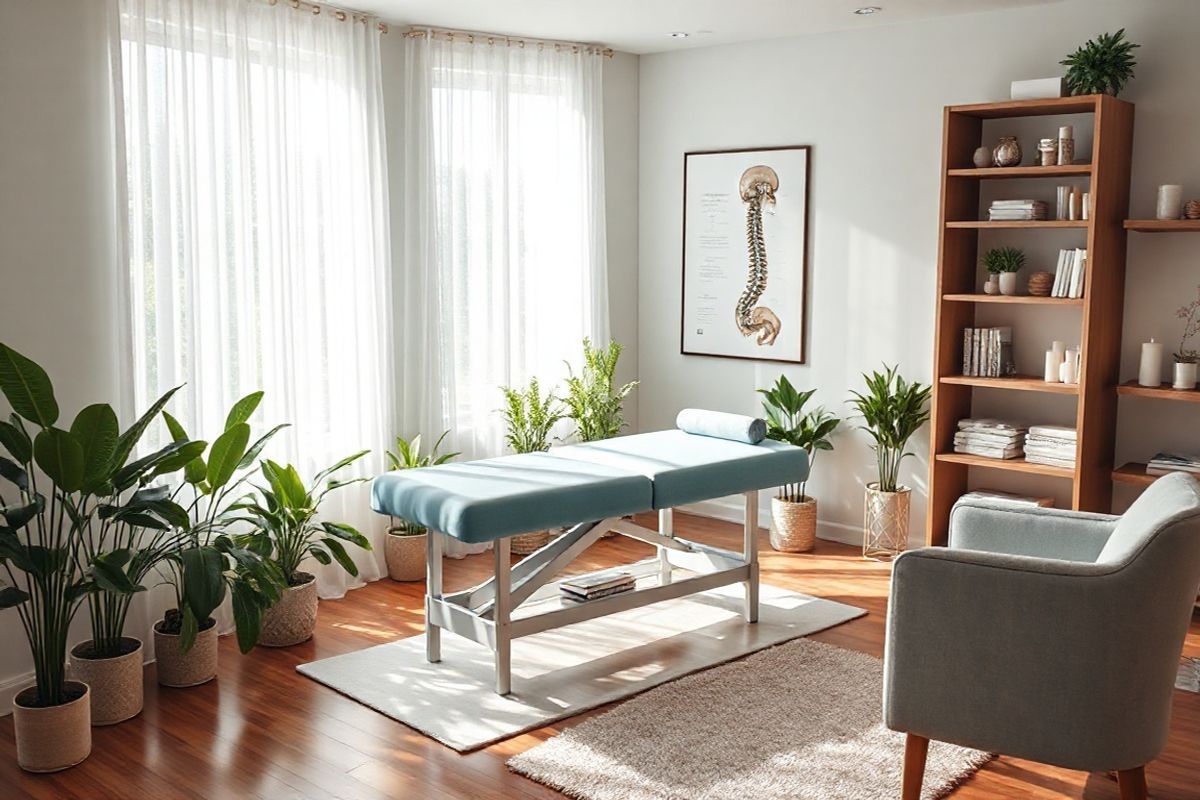Table of Contents
Understanding Scoliosis: Causes, Symptoms, and Diagnosis

The exact cause of scoliosis is often unknown, which is referred to as idiopathic scoliosis. In approximately 80% of cases, the underlying cause remains elusive, although genetic factors may play a role, as the condition can run in families (National Health Service, n.d.). Other less common causes include congenital scoliosis, where the spine does not develop correctly in the womb, neuromuscular scoliosis resulting from conditions such as cerebral palsy or muscular dystrophy, and degenerative scoliosis, which develops in adults due to wear and tear of the spine (National Health Service, n.d.).
Symptoms
Symptoms of scoliosis can vary significantly depending on the severity of the curve. Common signs include:
- A visibly curved spine.
- Leaning to one side.
- Uneven shoulders or hips.
- Ribs protruding on one side.
- Difficulty fitting clothes properly.
While many individuals with scoliosis may not experience significant pain, adults with the condition often report back pain, which can be exacerbated by the curvature of the spine (National Health Service, n.d.).
Diagnosis
Diagnosing scoliosis typically involves a physical examination by a healthcare professional who will assess posture and symmetry. If scoliosis is suspected, an X-ray is often performed to measure the curvature of the spine, which assists in determining the severity of the condition and guiding treatment options (National Institute of Arthritis and Musculoskeletal and Skin Diseases, n.d.).
The Role of Chiropractic Care in Scoliosis Treatment
Chiropractic care plays a significant role in the conservative management of scoliosis, focusing on spinal alignment and function. Chiropractors are trained to assess the spine and musculoskeletal system, providing a holistic approach to treatment that can greatly benefit individuals with scoliosis.
Chiropractic treatment often includes spinal manipulation, soft tissue therapy, and personalized exercise programs designed to strengthen the back muscles and improve flexibility. This approach aims to alleviate pain, improve function, and promote overall well-being (Cleveland Clinic, n.d.).
Benefits of Chiropractic Care
- Pain Relief: Chiropractic adjustments can help reduce discomfort associated with scoliosis by improving spinal alignment and reducing tension in the surrounding muscles (Healthline, n.d.).
- Improved Mobility: Regular chiropractic care can enhance joint function and increase the range of motion in the spine, which is particularly beneficial for those experiencing stiffness due to scoliosis (Healthline, n.d.).
- Posture Correction: Chiropractic adjustments can aid in correcting postural imbalances that may arise from scoliosis, ultimately leading to a more symmetrical appearance of the spine and torso (Cleveland Clinic, n.d.).
How Chiropractic Adjustments Can Alleviate Scoliosis Symptoms
Chiropractic adjustments, often referred to as spinal manipulation, involve the manual application of force to the joints of the spine. During an adjustment, the chiropractor uses their hands or specialized instruments to realign the vertebrae and enhance spinal function (Cleveland Clinic, n.d.).
The Adjustment Process
Typically, the first visit to a chiropractor lasts between 30 to 60 minutes, during which a thorough assessment is conducted. This includes gathering health history, current health issues, and any medications being taken. Physical examinations and diagnostic imaging such as X-rays may also be performed to better understand the individual’s specific condition (MedlinePlus, n.d.).
Expected Outcomes
Chiropractic adjustments can lead to several positive outcomes for individuals with scoliosis:
- Reduction in Pain: Many patients report decreased back pain and discomfort following adjustments.
- Improvement in Cobb Angle: Research suggests that chiropractic care may help improve the Cobb angle, a measure used to assess the degree of spinal curvature in scoliosis (Healthline, n.d.).
- Enhanced Quality of Life: Patients often experience a better quality of life through improved mobility, reduced pain levels, and increased physical activity.
Comparing Chiropractic Treatments with Traditional Scoliosis Therapies

The treatment for scoliosis often varies depending on the severity of the curve, age, and overall health of the patient. Traditional approaches may include observation, bracing, or surgery for more severe cases. In contrast, chiropractic care offers a non-invasive alternative that focuses on symptom management and functional improvement.
Traditional Treatments
- Observation: In cases of mild scoliosis, especially in children, regular monitoring may be the only treatment required.
- Bracing: Children and adolescents may be fitted with a brace to halt the progression of spinal curvature during growth spurts. Bracing is less common in adults (National Health Service, n.d.).
- Surgery: Surgical options, such as spinal fusion, are typically reserved for severe cases where the curvature exceeds 45 degrees or causes significant pain and functional impairment (National Health Service, n.d.).
Comparative Analysis
| Treatment Method | Chiropractic Care | Traditional Treatment |
|---|---|---|
| Effectiveness | Pain relief, improved mobility | Varies by intervention type |
| Invasiveness | Non-invasive | May involve surgery |
| Age Suitability | All ages | Primarily children/adolescents for bracing |
| Long-term Management | Emphasizes ongoing care | May require one-time or periodic interventions |
While chiropractic care may not entirely correct the curvature of the spine, it can significantly enhance the quality of life for many scoliosis patients by reducing pain and improving overall function.
Living with Scoliosis: Integrating Chiropractic Care into Your Health Routine
Living with scoliosis can present various challenges, including managing physical discomfort and maintaining a positive body image. Integrating chiropractic care into your health routine can be a beneficial approach for managing these challenges.
Practical Tips for Incorporation
- Regular Chiropractic Visits: Establish a routine for visits to your chiropractor, as consistent care can yield the best results over time.
- Exercise and Physical Activity: Incorporate exercises recommended by your chiropractor to strengthen the back muscles and improve flexibility.
- Posture Awareness: Be mindful of your posture throughout the day, especially if you spend extended periods sitting or working on a computer.
- Support Groups: Consider joining support groups for individuals with scoliosis, which can provide both emotional support and practical advice for managing the condition.
FAQs
What is scoliosis?
Scoliosis is an abnormal curvature of the spine, often shaped like a “C” or “S.” It can occur in children, adolescents, and adults and may cause physical discomfort and postural imbalances.
Can scoliosis be treated with chiropractic care?
Yes, chiropractic care can be an effective treatment option for managing scoliosis symptoms, focusing on spinal alignment, pain relief, and improving mobility.
How often should I see a chiropractor for scoliosis?
The frequency of chiropractic visits varies based on individual needs and treatment plans. Many patients find that regular visits (weekly or biweekly) are beneficial for ongoing symptom management.
Will chiropractic adjustments completely straighten my spine?
Chiropractic adjustments may not completely straighten the spine, but they can help alleviate symptoms, improve spinal function, and enhance quality of life.
Are there any risks associated with chiropractic care for scoliosis?
Chiropractic care is generally safe, but it may not be suitable for individuals with certain conditions such as severe osteoporosis or acute neck pain with neurological symptoms. Always consult with a healthcare provider before starting any new treatment.
References
- National Health Service. (n.d.). scoliosis. Retrieved from https://www.nhs.uk/conditions/scoliosis/
- National Institute of Arthritis and Musculoskeletal and Skin Diseases. (n.d.). Scoliosis in Children and Teens: Diagnosis, Treatment, and Steps to Take
- Cleveland Clinic. (n.d.). Chiropractic Adjustment Care, Treatment & Benefits. Retrieved from https://my.clevelandclinic.org/health/treatments/21033-chiropractic-adjustment
- Healthline. (n.d.). Chiropractic Benefits: 10 Advantages of Chiropractic Care. Retrieved from https://www.healthline.com/health/chiropractic-benefits
- MedlinePlus. (n.d.). Chiropractic care for back pain: MedlinePlus Medical Encyclopedia











